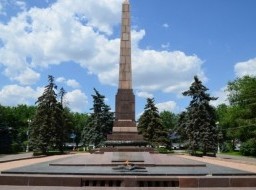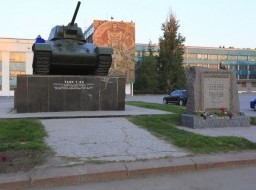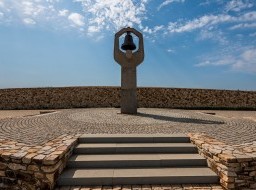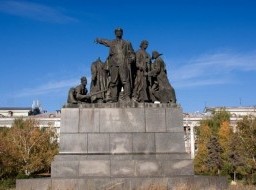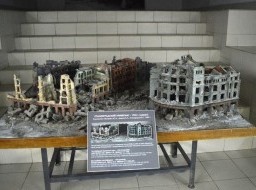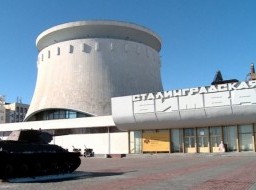Square of Fallen Fighters
The building of Volgograd Postoffice was constructed in 1955. Nearby there is a hotel “Intourist”, built in a classical style in 1958. It is a monument of architecture. Opposite it one can see a hotel “Volgograd” built in 1890 by a merchant Voronin. It was called “Capital rooms” and was on 3 floors. During the war it was ruined and then newly rebuilt in 1955. Opposite the hotel ”Inturist” Drama Theatre is situated, with New Experimental Theatre in it. It was built by a merchant Repnikov in 1915. At first it was called Tsaritsin House of arts and science. The library and Tsaritsin Museum were here. Then Drama Theatre occupied this building. It was ruined during the war but was rebuilt in 1952. In 1989 New Experimental Theatre found his seat here. The monument to Alexander Nevsky was erected on February, 24, 2007 in front of the theatre. A. Nevsky is considered to be a celestial protector of Volgograd. Between the hotels ”Volgograd” and ”Intourist” there is a Brothers grave to the defenders of the city in 1919. A 6 m high obelisk was constructed on this place. In 1942 about 100 fighters, defenders of Stalingrad were buried here. And in 1957 a new black-and-red granite 26 m. high obelisk was erected on the grave. Eternal Flame is here since 1963. Since 1966 one can see the change of the guard here. The best schoolboys and schoolgirls stay here in the guard. Not far from Eternal Flame there is an international grave of 3 fighters. They defended Stalingrad from the fascists: a Spaniard Ibarruri Ruben Ruis, a Russian pilot Kamenshikov Vladimir Grigorjevich and a Tartar Hafis Fatjahuddinov. On the square of the Fallen Fighters you can see a poplar-tree. It is the only tree left after Stalingrad Battle. That`s why it is covered with war scars. In 1975 a granite plate was put here. There are such words on it: “Nature – historical monument. This poplar-tree brought his life through the great battle”. The Square of the Fallen Fighters is inseparably linked with the events of the Battle and Stalingrad and the civil war. It was the main defense position of the surrounded German troops, and it was there that field-marshal Paulus was taken prisoner. The Square of the Fallen Fighters is the historic center of the city. It had been a market place in front of the fortress of Tsaritsyn for several centuries. In the 19 century the square began to acquire a better look.
In honour of Emperor Alexander II it was called Aleksandrovskaya, and in 1888 there began the construction of Alexander Nevsky Cathedral in memory of the saving of the royal family during the crash of the royal train near Kharkov. The big metropolitan cathedral was finished in 1916 but it was blown up in 1936. In 1905 and 1917 the square was the place of demonstrations and armed actions of the revolutionaries who fought with tsarist power and in remembrance of those events it was given the name «the Square of the Fallen Fighters». In 1919 the white guard buried on the square the officers and civilians who perished from the «red terror», and in the following year the Bolsheviks in their turn buried there the victims of the «white guard terror». After the Great Patriotic War the square was the burial place of the soldiers, who were killed during the defense of Stalingrad. Today this huge square (274 meters long and 90 meters wide) is divided in two parts. The part, which is closer to the railway station, is paved with stone block and asphalt and is intended for great ceremonies and parades. The other part, giving on the Alley of Heroes, is completely planted with trees and has the form of several boulevards. Among these alleys are the main monuments of the Square of the Fallen Fighters: the stele on the burial place and the eternal flame, a huge poplar, which survived there even during the fights for Stalingrad, a chapel and some other monuments. The square is surrounded by impressive Stalin Empire buildings, including the famous department store in which basement field-marshal Paulus was taken prisoner on January 31st 1943. Now it houses the museum «Memory» where one can have a look at the exhibits related with those events. |

